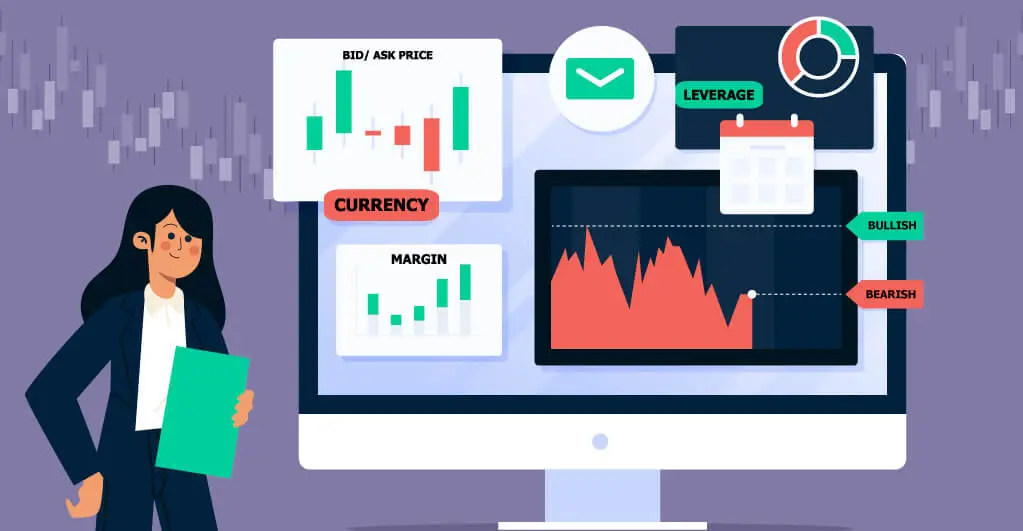Introduction
If you are new to the Forex market, the possibilities are that you have stumbled upon a forum post or an article that includes terms like margin, pip, and others. The Forex world is full of strange terms, words, and acronyms that can often leave us with some headache. Not understanding them can be a big obstacle to the journey of a trader and making successful trades. Here is a list of the core terms that all Forex traders should know to build up their trading knowledge.
Currency pair
Even if currencies are traded in the FX market, we cannot buy/sell a single currency. Whenever we place a trade, we need to trade on a currency pair. A currency pair always includes two currencies always. The first currency is the base and the second currency is the counter currency. Let us take the example of EUR/USD. If you want to buy this pair, you will bet that Euro will perform better than the US dollars. Currency pairs are categorized into three core groups:
- Major Pairs: They consist of the eight most common pairs. All these pairs contain USD as their counter currency or base currency along with the following currencies: CAD, EUR, CHF, GBP, NZD, AUD, and JPY.
- Cross Pairs: They are two major currencies that don’t include USD as the counter or base currency. They are more volatile as compared to the Major Pairs. Some of the cross pairs are NZD/CAD, EUR/CAD, and GBP/AUD.
- Exotics: They are exotic currencies, or say, lesser-known currencies that can be volatile. They include Polish Zloty, Hungarian Forint, and more.
Leverage
Forex market remains open 24/5. It not only lets traders profit from increasing prices but on falling prices as well. There is one more reason for more and more traders getting attracted towards the Forex market, that is, leverage. Leverage refers to the borrowed money. Trading with leverage lets traders open a position using a bigger contract size and less expenditure. With high leverage trading, you can trade your preferred Forex pairs by investing a large amount of money.
Bid / Ask Price
Every currency pair has two exchange prices – bid price and ask price. A bid price is known as the rate at which purchasers are ready to buy. An ask price is known to be the cost at which traders are prepared to sell. The asking price is usually higher than the bid price. The difference between these prices is called Spread. Both the prices are shown on the left side of MetaTrader 4 of the Market Watch.
Margin
Margin refers to the initial amount that traders need to put to open a new position. Margin offers an opportunity to the traders to open larger positions. While trading using margin, traders have to put a percentage of a position’s full value to open a trade. Although margin allows for leverage trading, it magnifies both losses and profits.
PIP
PIP is the short form of Percentage in Point. PIP refers to the smallest amount of change in a currency pair’s exchange rate. Used to measure a value, PIP is the fourth decimal on a rate quote for currency pairs. For example, the price quote for AUS/USD is 0.6876. It means that with one Australian Dollar, you can buy 0.6876 USD. If the price quote increases to 0.6877, it means that you may get a little more USD for each AUD.
Bullish/bearish
The market sentiments offer the view of a particular market’s performance. A Bullish sentiment means that the rate is going upward. A Bearish sentiment means that the rate is going downward.
Yield/returns
Yield / Returns refers to the return on an investment that you make in the Forex market. In other words, the yield is the income earned from your investment. It is generally the dividend or interest payment.
Conclusion
As you know, there are lots of technical words and terms in the Forex trading world. Being traders, you should be learning, reading, and building your knowledge to make yourself well-rounded traders to become more successful. If you want to get into the trading world, we have compiled a detailed analysis for you on Top Forex Signal Providers with an in-depth review of it to help you choose which one is suitable for you.
